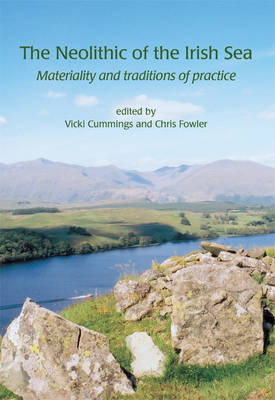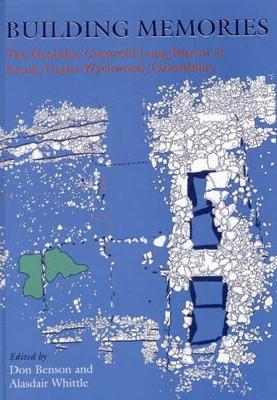Cardiff Studies in Archaeology
1 primary work • 3 total works
Book 16
This volume explores the landscape settings of megalithic chambered monuments in Wales. Set against a broader theoretical discussion on the significance of the landscape, the authors consider the role of visual landscapes in prehistory, meanings attached to the landscape, and the values and beliefs invested in it. Wales is rich in Neolithic monuments, but the general absence of certain classic monumental forms found in the rest of Britain and Ireland, such as causewayed enclosures, henges, and cursus monuments, seems to have marginalised the Welsh record from many wider discussions on the Neolithic. Instead of seeing Wales as an area which lacks many of these 'classic' components, Cummings and Whittle argue that Wales has its own unique and individual Neolithic which is simply different from the Neolithic found further to the east. It is suggested that this difference may relate to an essentially mobile existence, with strong links back to the Mesolithic period. The authors present three detailed case studies, examining the settings of sites in south-west, north-west and south-east Wales. They outline the history of research for each region, including the previous classification of the monuments and any excavations, and describe the specific landscape settings of the monuments. They assess the significance of a variety of landscape features which would have been visible from the monuments, in particular emphasising the mythological and symbolic significance of the sea, rivers and mountains. An illustrated inventory of sites completes the volume.
This collection of 24 papers aims to reconsider the nature and significance of the Irish Sea as an area of cultural interaction during the Neolithic period. The traditional character of work across this region has emphasised the existence of prehistoric contact, with sea routes criss-crossing between Ireland, the Isle of Man, Anglesey and the British mainland. A parallel course of investigation, however, has demonstrated that the British and Irish Neolithics were in many ways different, with distinct indigenous patterns of activity and social practices. The recent emphasis on regional studies has further produced evidence for parallel yet different processes of cultural change taking place throughout the British Isles as a whole. This volume brings together some of these regional perspectives and compares them across the Irish Sea area. The authors consider new ways to explain regional patterning in the use of material objects and relate them to past practices and social strategies. Were there practices that were shared across the Irish Sea area linking different styles of monuments and material culture, or were the media intrinsic to the message? The volume is based on papers presented at a conference held at the University of Manchester in 2002.
It is just over forty years since the start of the excavations of the Ascott-under-Wychwood long barrow (1965-69) under the direction of Don Benson. The excavations belonged to the latter part of a great period of barrow digging in southern Britain, which was ending just as, by striking contrast, intensified investigation and fieldwork at causewayed enclosures were beginning. Although a long gap has passed since the excavations took place, they have nonetheless produced a rich and important set of results, and the analysis has been enhanced by more recent techniques. The site now joins Burn Ground and Hazleton North as one of only three Cotswold long barrows or cairns to have been more or less fully excavated. The barrow had been built in two main stages, in a series of bays defined by lines of stakes and stone, and filled mainly with earth and turf, with some stone; it was enclosed or faced by stone walling, the outermost being of very fine quality. The barrow contained two opposed pairs of stone cists, each with a short passage from the long sides of the monument. The cists and passages contained the remains of some 21 people (of all ages and both sexes), probably deposited in a variety of forms from fleshed inhumations to incomplete secondary remains and cremations. The barrow was built in the 38th century cal BC and was probably one of the earliest such constructions in the region. It was probably in use for only three to five generations, lasting into the 37th century cal BC. Occupation features from the early fourth millennium cal BC included small pits, hearths and two small timber post structures, and there were finds of pottery, flint, axe fragments, stone querns and animal bone. People used cattle, sheep and pigs, and there is a range of wild species, especially in the midden. The authors of this report not only document the finds and research, but also address wider questions of how the early Neolithic inhabitants viewed their society through the barrow, and how the development of the site reflected memory and interaction with a changing world.


